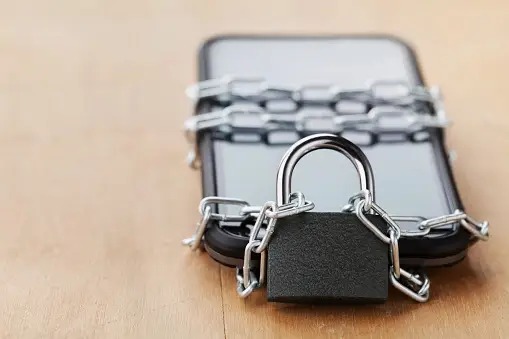The technological advancement of recent decades has radically transformed the way we communicate and relate to others. Mobile devices, in particular, have become an inseparable extension of our lives, giving us constant access to information, entertainment, and online connections. However, this digital interconnection has also brought with it a number of intriguing social challenges and phenomena that deserve deeper attention.
What is Phubbing?
One of these phenomena is “phubbing”, a term that arises from the fusion of the words “phone” (telephone) and “snubbing” (ignore). Phubbing refers to the act of paying more attention to a mobile device than to the people present during face-to-face social interactions. Although this behavior may seem harmless at first, its implications are much deeper than we could anticipate.
In this article, we will explore the concept of phubbing as a non-substance addiction, its underlying causes and most importantly, the consequences it can have on our interpersonal relationships and the very fabric of society.
A new chapter within non-substance addictions is technology addiction, which involves excessive and compulsive use of electronic devices, such as mobile phones, tablets and computers. The symptoms expressed are the constant need to check messages, social networks or play online games, even when it interferes with other activities and relationships.
Non-substance addictions, also known as behavioral addictions or behavioral addictions, are compulsive and problematic patterns of behavior that share similarities with traditional substance addictions. Although they do not involve the ingestion of drugs, these addictions can have significant effects on people’s lives and their psychological and emotional well-being.
The scientific basis that supports the understanding of non-substance addictions is as follows:
- Brain changes: Research has shown that non-substance addictions can also activate brain circuits similar to those activated in substance addictions. Reward and motivation systems in the brain, such as the dopamine system, are involved in the pleasurable sensation associated with addictive behavior.
- Positive reinforcement: As with addictive substances, non-substance addictions often provide immediate rewards or gratification that reinforce the addictive behavior. This can lead to a cycle where people repeatedly seek that reward.
- Tolerance and withdrawal: Non-substance addictions can cause symptoms of tolerance, where the person needs to increase the amount or intensity of the behavior to obtain the same gratification. Additionally, withdrawal from certain addictive behaviors can lead to symptoms of physical or emotional distress.
- Reward cycle: The constant repetition of an addictive behavior can lead to the formation of a reward cycle in the brain. This can make the person feel trapped in the addictive behavior, even when they are aware of its negative consequences.
- Impact on mental health: Non-substance addictions can have a significant impact on people’s mental and emotional health. They can contribute to anxiety, depression, low self-esteem, and other mental health problems.
What are the consequences of technology addiction?
The consequences of these behaviors have to do with the deterioration of the quality of communication. When a person pays more attention to their device than to the ongoing conversation or interaction, communication is affected. This can lead to misunderstandings, lack of emotional connection and the feeling that the conversation is not valued, so the decrease in quality time during phubbing can steal valuable time in which people could connect in a healthier way.
This can affect the opportunity to share experiences or emotions from significant moments, which weakens the bond in the long term. We do not have to underestimate that a lack of attention and empathy can erode trust and self-esteem in a relationship. Carrying out this behavior generates nothing more than resentment added to the emotional disconnection that the party that is not being heard or understood may feel and may distance themselves emotionally from the relationship because it is not a priority compared to the device.
A special section is how phubbing can affect children in their subsequent behavior. Adults are role models. If adults caring for children are constantly engrossed in their devices and paying little attention, children may learn that this is an acceptable form of behavior.
This could lead to them also seeking out digital distractions instead of interacting with others or being present in the moment. When children or adolescents experience phubbing from their caregivers, they may feel unimportant or unvalued. They may interpret electronic devices as taking priority over them, which could affect their self-esteem and perception of importance in adult life.
Face-to-face interaction continues to be crucial for the social development of children, adolescents and adolescents. Phubbing can limit the quality time adults spend interacting and playing with children. This can affect their ability to develop communication, empathy and conflict resolution skills, such as difficulties expressing their thoughts and emotions, which could have a negative impact on their linguistic and communicative development, as well as resulting in withdrawal behaviors. and loneliness in front of his friends and colleagues.
Excessive use of electronic devices can lead to digital dependency, where children, adolescents, and adults feel anxious or uncomfortable when they do not have access to them. In such a way that empathy is lost and the feelings of others are left aside due to a weak development of social skills.
Children’s emotional security is based on feeling loved, valued and cared for. Phubbing can erode that sense of emotional security, which could influence their confidence and how they develop relationships with others in the future. It is important for adults to be aware of how the use of electronic devices can affect them. Setting healthy limits on device use and spending quality time free of digital distractions can help maintain a positive and nurturing relationship.
Conclusions
It is important for parents and ca?regivers to encourage a healthy balance between electronic device use and in-person social interactions. Setting limits on screen time, promoting social activities, and encouraging open communication about technology use can help mitigate these negative effects.
Cognitive and behavioral therapies, as well as group therapy, have been shown to be effective in the treatment of non-substance addictions. Some people may benefit from exposure therapy, where they are gradually familiarized or brought closer to the situations that trigger their addictive behavior, thereby helping them develop coping strategies.

